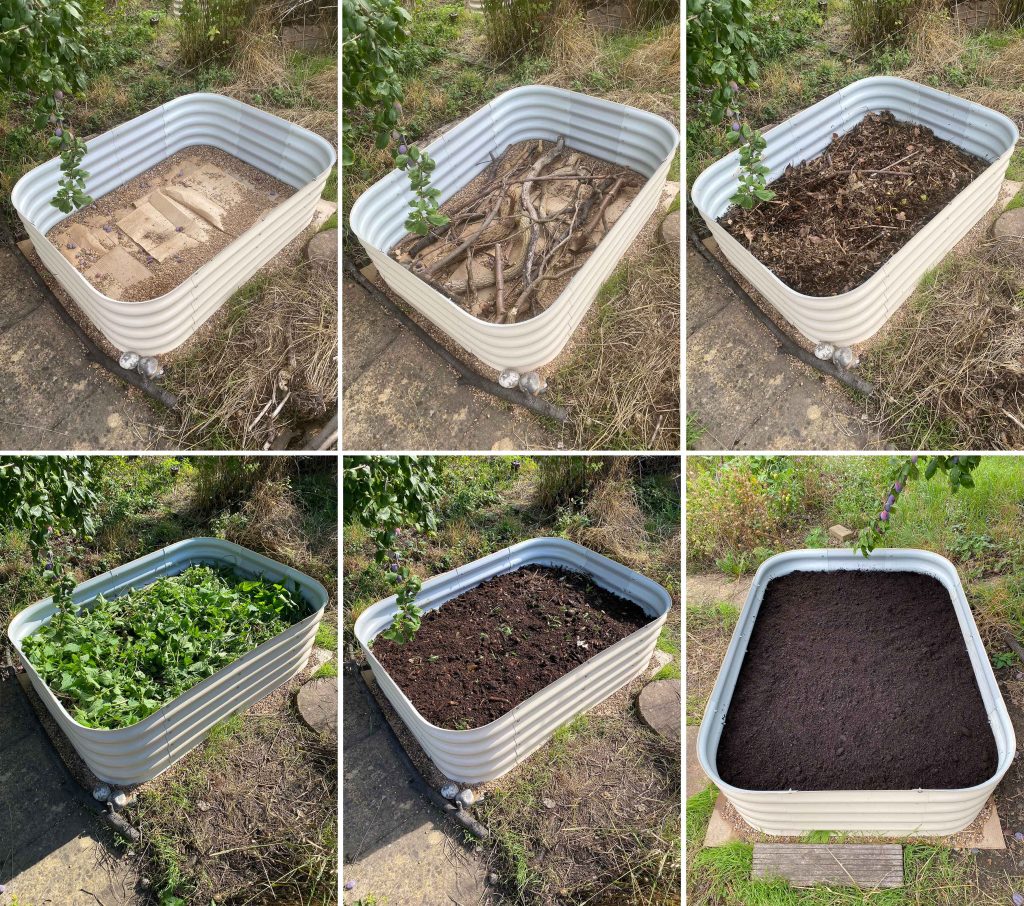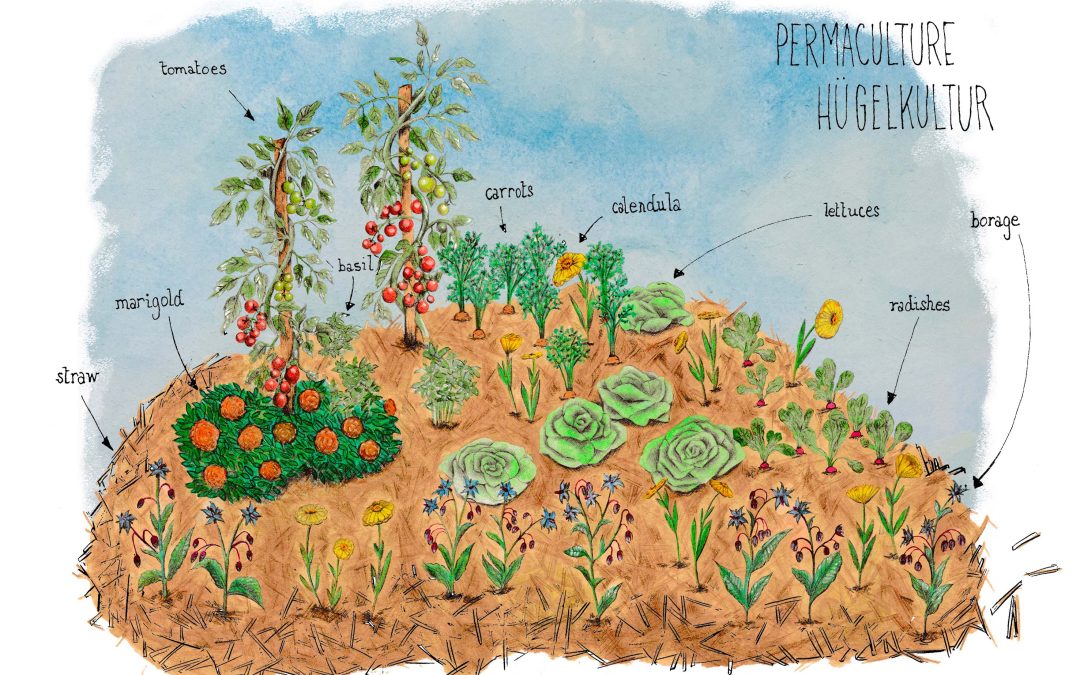What is Hügelkultur?
Hügelkultur (German pronunciation:[ˈhyːɡl̩kʊlˌtuːɐ̯]), is literally mound bed or mound culture – a raised bed with very steep sides. At the centre of the bed is rotting wood, branches or other bulky organic material, covered with upturned turf and topsoil. The idea is that the wood at the centre acts like a sponge, absorbing water and releasing heat as it breaks down. It also feeds the bed, slowly releasing nutrients.
This type of growing system has been used in Germanic and Eastern Europe for hundreds of years.
Considered a permaculture practice, advocates claim that the technique helps to improve soil fertility, water retention, and soil warming, thereby benefitting plants grown on or near such mounds.
I’ve been intrigued by the idea of hügelkultur beds for some time and creating some raised beds presented the perfect opportunity to try out a ‘hügelkultur lite’ version within the high raised bed and using branches rather than large logs.
After levelling and covering the soil with a base layer of cardboard and some gravel the raised beds manufacturer’s recommended for protection, I set to work on the layers:

1. Wood
The first layer should be wood or woody material
Most woods are fine, however do not use any allelopathic trees which inhibit growth of other plants, such as black walnut, eucalyptus, tree of heaven, pine, sugar maple, sycamore or goldenrod to form your beds.
The best wood to use is wood that is already quite rotten, though newly cut wood can also be used in combination with a nitrogen rich material like grass clippings.
This is because wood uses up a fair amount of nitrogen in the initial stages of decay, so this must be taken into account.
I’d pruned a couple of trees, so used the thicker branches of this at the bottom. Then added some rotting woodchip from my plum tree, mixed with decomposing plums and apples, which was all smelling rather delicious!
2. Leafy and woody prunings/trimmings
Organic Matter
To cover this woody pile, you require layers of organic matter, both nitrogen rich materials like grass clippings, kitchen scraps and green leaves, and carbon rich materials, like straw or dried leaves.
Basically, anything that you would include in a regular compost heap can be included in a hügelkultur mound.
I topped my wood layers with a green layer of chopped comfrey and nettle leaves for nitrogen, and dried leaves and straw for carbon.
3. Compost/ Soil
To top your hügelkultur raised beds and give you something to plant into, you will need a thin layer of compost/ soil.
Using homemade compost is ideal, and you can also use loam/ topsoil dug from the location of the new beds in certain situations.
I used a layer of my homemade allotment compost, finally filling with a bag of top soil SylvaGrow peatfree topsoil.
The Finished Hügelkultur
It was rather fun filling each layer and good to make use of existing materials on my plot, buying only the bag of topsoil and the actual raised bed.
I’ve now planted up my hügelkultur raised bed with a selection of seeds; radicchio, winter lettuces, radishes, carrots and natusturtiums, alongside some plants of marigolds, calendulas and Jacob’s Cattle bush drying beans.
Am very interested to see how it will all fare over the coming months.
If you fancy trying yourself, there are lots of interesting and helpful articles online.
Here are some I found useful:
https://www.epicgardening.com/hugelkultur-raised-bed/
https://www.permaculture.co.uk/articles/the-many-benefits-of-hugelkultur/
https://www.growveg.co.uk/guides/how-to-make-hugelkultur-beds-for-growing-vegetables/
https://www.livingetc.com/advice/hugelkultur
https://hartley-botanic.co.uk/magazine/what-is-hugelkultur/

